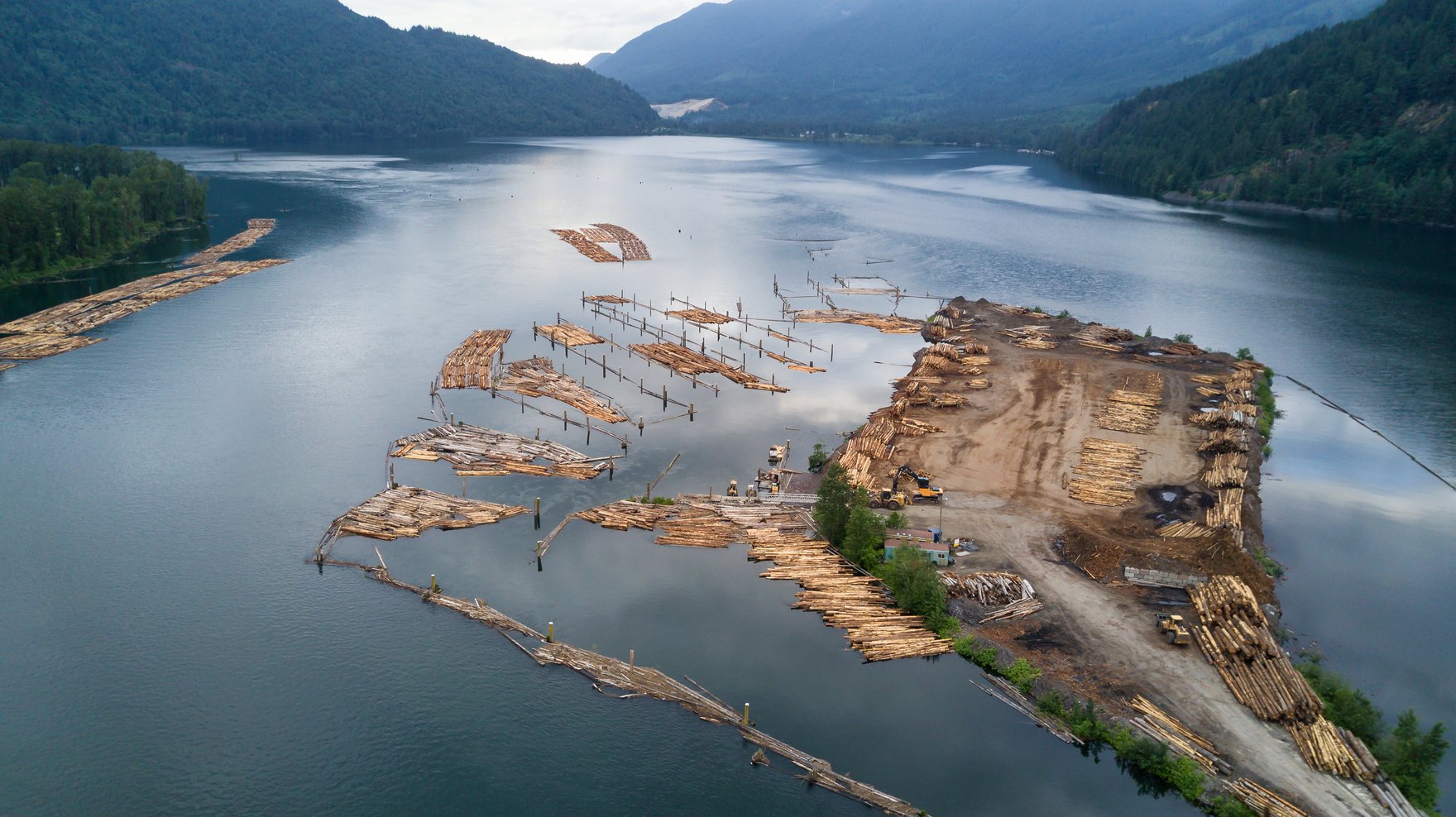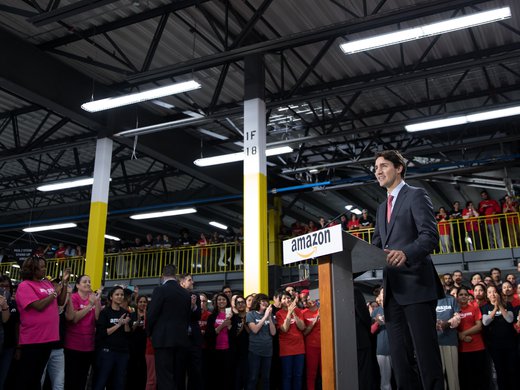A decades-old softwood trade disagreement between Canada and the United States will be on the minds of top officials from both countries as the seventh round of talks to renegotiate the North American Free Trade Agreement (NAFTA) are underway in Mexico City.
To summarize the seemingly never-ending conflict, US officials are expected to continue to push for the abolishment of a key dispute resolution mechanism enshrined in NAFTA. Currently, that mechanism is employed to decide if US tariffs imposed on Canadian softwood lumber meet trade law requirements.
Last November, the US Commerce Department issued a final determination that Canada was giving unfair subsidies to its softwood lumber producers. The Trump administration came to the conclusion that Canadian producers should pay on average a 20.23 percent tariff on exports of softwood lumber to the United States, with the largest producers paying individualized rates. The decision set in motion a series of challenges, which are likely to play out over the next few years.
US softwood lumber producers are at the centre of this disagreement, arguing that their Canadian rivals have a cost advantage because, for the most part, they manufacture lumber from trees grown on Canadian government-owned land, while US wood companies produce using trees grown on privately owned land.
Zoltan van Heyningen, executive director at the US Lumber Coalition, argues that Canada’s softwood lumber system displaces US workers and communities to the benefit of Canadian producers. Between 80 and 90 percent of lumber in Canada is managed by provincial governments that also control prices and supply. Van Heyningen argues that, alternatively, US lumber producers operate in a much less controlled environment, with between 80 and 90 percent of fibre supply coming from private owners who will do everything to maximize return on their investment.
“US producers have to operate in a normal competitive market,” van Heyningen said. “Canadian producers can do so at levels that are not connected to market reality. In Canadian provinces macro-policies come into play which supersede pure profit maximization incentives.”
However, the BC Lumber Trade Council, which represents the province’s softwood-producing companies, pushed back on assertions that Canada operates outside of market norms. Susan Yurkovich, president of the council, points out that British Columbia and Quebec — which together produce 85 percent of Canadian timber — employ a market-based auction system, where a percentage of timber is auctioned off.
Yurkovich argues that the US-Canada integrated lumber market exists because US demand for lumber — particularly for home building — far exceeds what US mills can produce.
In 2016, the United States consumed 46.7 billion board feet of lumber, but U.S. lumber production came in at an estimated 32.4 billion board feet, according to an April 2017 study on softwood lumber.
“There hasn’t been enough [US] domestic supply, particularly SPF [spruce, pine and fir] lumber which is important for framing,” Yurkovich said.
The market-based auction system in Canada, she notes, creates a market price that is used to set stumpage prices, which is what a private firm pays for the right to harvest timber. To back her assertion that Canada operates within market norms, Yurkovich points to lumber litigation in the early 2000s, in which Canada was successful with its appeal, and US regulators reviewing the dispute were forced to reverse their decision.
“When we went to challenge US arguments each time, Canada has been successful,” Yurkovich said.
The heated disagreement, unlikely to be resolved any time soon, has put an intense spotlight on a dispute resolution mechanism the Canadian government triggered in January — NAFTA’s Chapter 19. US regulators want to see the provision abolished because, they argue, it gives Canada an unfair advantage.
The current NAFTA provision allows three panels, each with five experts (although some south of the border dispute the term “experts” to describe the participants) to meet and determine if the US softwood lumber duties meet US trade law requirements.
The individuals who will serve on these panels haven’t yet been chosen, but they typically are made up of US and Canadian lawyers and economists. A coin flip determines whether the panel is comprised of three Canadians and two Americans or the reverse. For this round of dispute resolution, US officials represent a majority on two panels and a minority on the third. Panel decisions can be appealed to an “extraordinary challenge committee” within NAFTA, and the review process could take years to complete. However, once the review is concluded, the decision can’t be appealed to a US court.
The US Lumber Coalition and the Trump administration are pushing for the removal of NAFTA’s Chapter 19, based on the criticism that it allows a non-American private citizen to participate in a determination of whether a US agency has properly followed US law.
“There is no other agreement that allows a foreign or US private citizen, not a judge appointed by the President and confirmed by the Senate, to sit on a panel and tell an agency how to apply US law,” van Heyningen says.
If Chapter 19 is ultimately dismantled, softwood lumber disputes would go to the US Court of International Trade, which focuses on cases involving the application of US trade laws. Any appeals would be sent to a US federal appeals court.
“With the US court system, you have a US judge appointed by the President and confirmed by Senate,” van Heyningen said.
But Yurkovich defends the Chapter 19 NAFTA panels, noting that they were set up to resolve disputes between two parties, in this case Canada and the United States.
“You need to have both sides represented to have impartiality in a decision,” she said. “If you have an agreement between two parties from time to time you will have disputes to the agreement. Both parties to the agreement should be parties to the resolution of the disagreement.”
Canada is clearly betting that its case will find more sympathetic ears among Canadian and US trade experts than they would have found with the US Court of International Trade.
At the same time, Canada is pursuing another litigation track. In January, it made a request to have US tariff consultations at the World Trade Organization (WTO), which would bring together Canadian and US governments for 60 days of discussions. After the meetings are completed, Canada can ask the WTO to set up a panel to resolve the dispute, setting the stage for a parallel review process that could take years.
Nevertheless, the most likely outcome of the various challenges and latest round of tariff disputes is a settlement that is reached after some of the dispute resolution panels produce their decisions. Such an agreement could still be years away and any deal will need to resolve a much wider set of issues, such as including a follow-on prohibition for further claims.
For now, with both President Donald Trump and Prime Minister Justin Trudeau threatening to leave NAFTA if they can’t reach an agreement, expect softwood lumber and the future of the trade agreement’s dispute resolution panels to remain a core point of contention among negotiators in this round, and the many rounds likely to follow.



